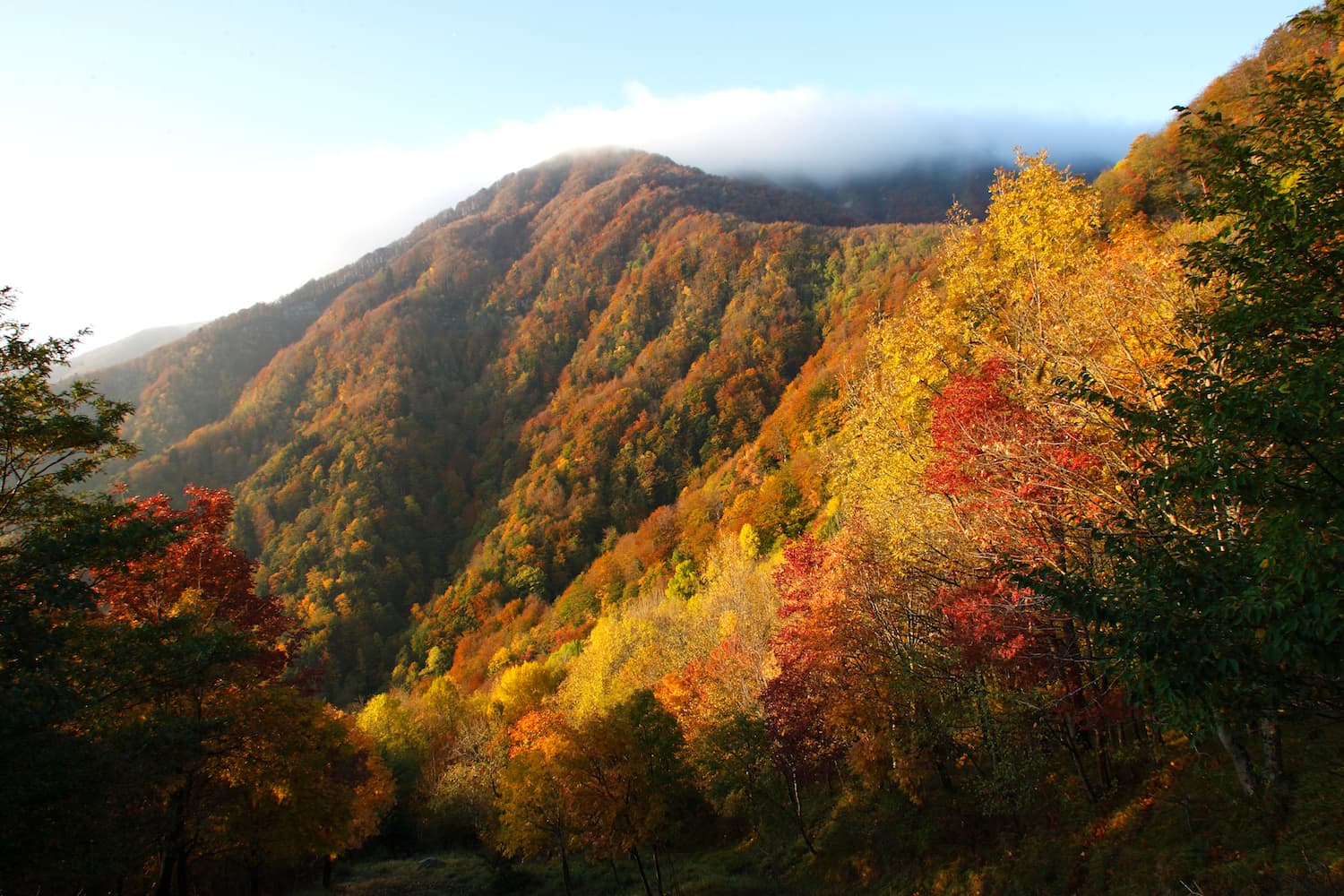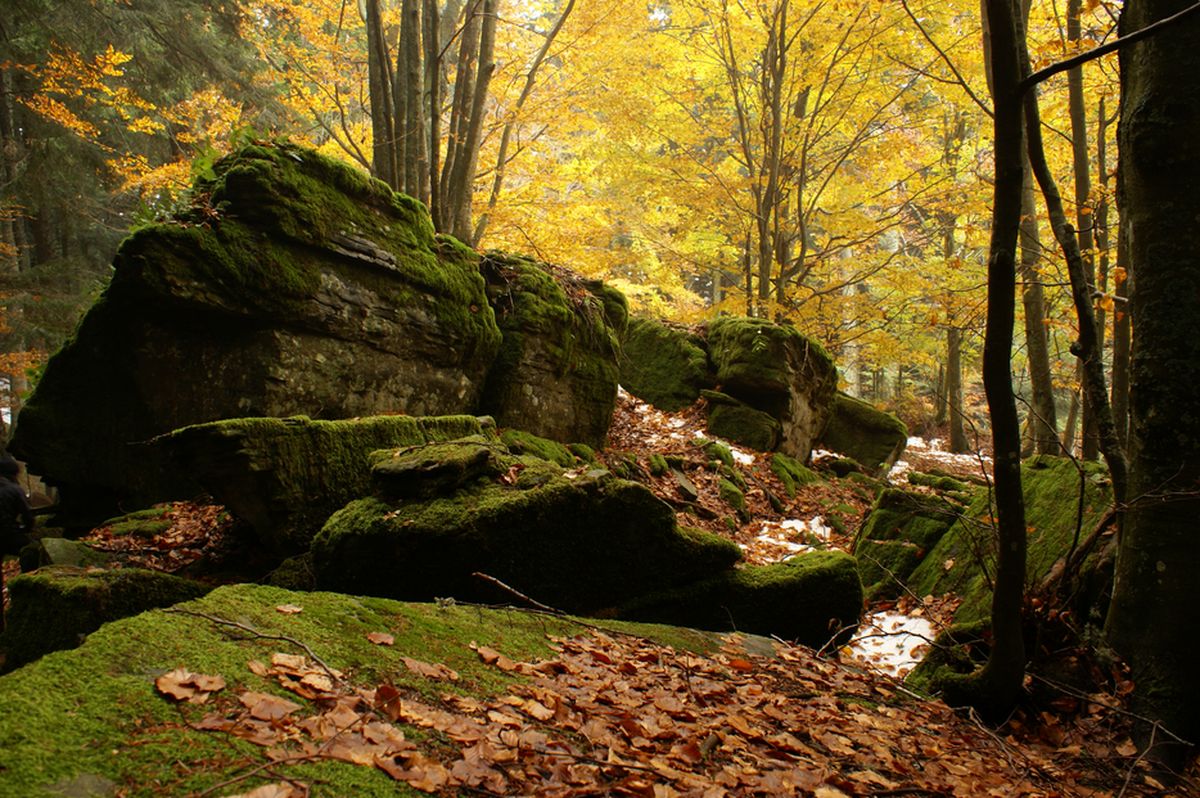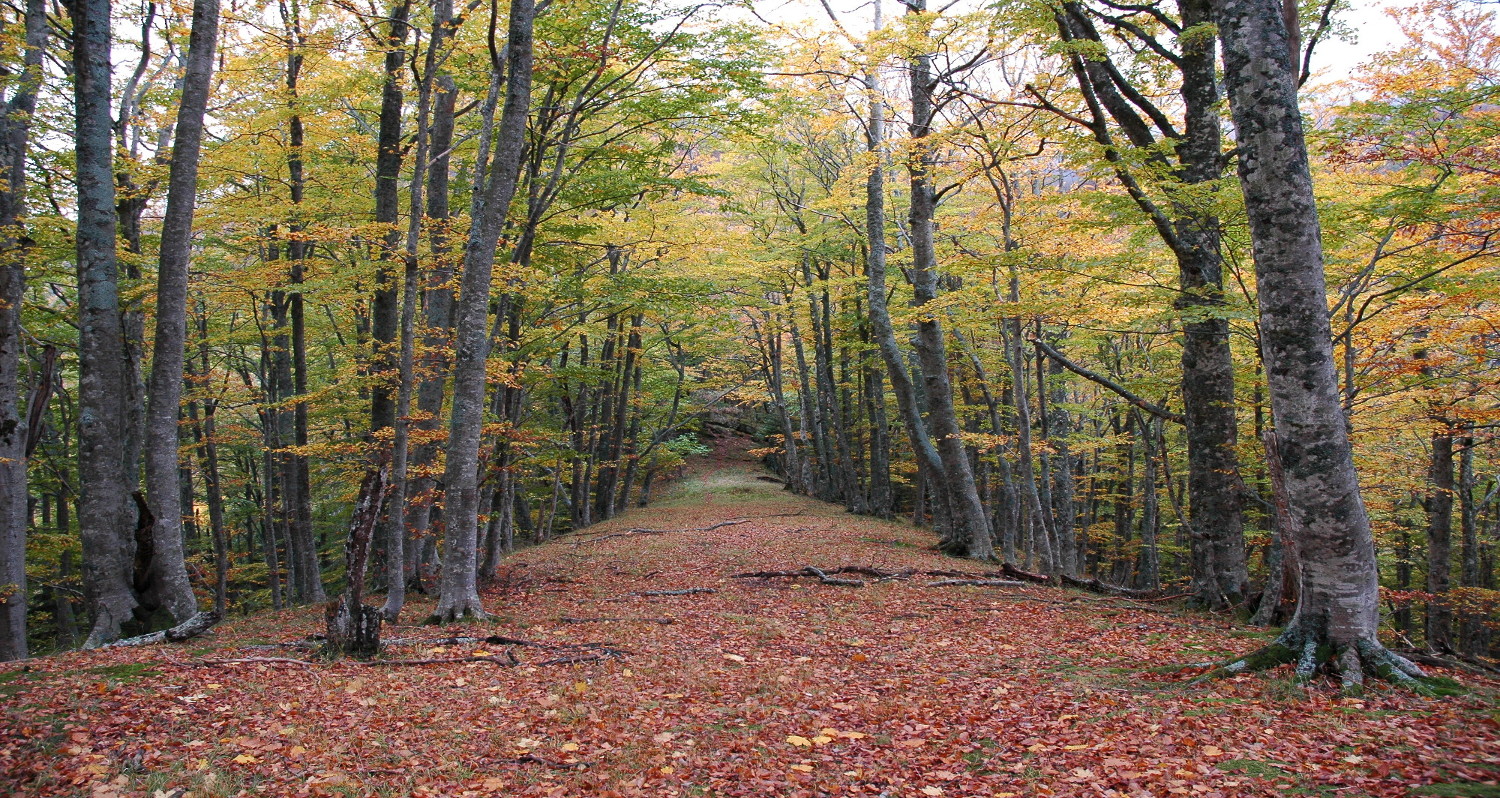
A refuge far from blaring car horns, smog and work. The National Park of the Casentine Forests instils a sense of peace with nature and the environment. Fragrances, majestic trees, all-embracing leaves… It is easy to be overcome by its beauty and the streams flowing here.
From Bagno di Romagna you can access to the National Park of the Casentine Forests, Mount Falterona and Campigna covers a total of approximately 36,000 acres, equally divided between the regions of Emilia Romagna and Tuscany, comprising territories in the Provinces of Forlì-Cesena, Arezzo and Florence.
The ancient beechwoods of Sasso Fratino National Park and Integral Reserve have made the UNESCO World Heritage Site list: ancient, robust trees are the pride of unspoilt Romagna. Over the years, for many scholars, Sasso Fratino has become a natural workshop where visitors can learn how the ecosystems work and thus, develop strategies for maintaining biodiversity.
Imposing forests, filled with mixed-tree woods, cover almost the entire territory of the park, to the extent it could be crossed in its entirety without every leaving the lush and rich green blanket that envelops it. Ancient forests steeped in history, where the relationship with man is deeply-rooted and has been well-documented since 1012, when St. Romuald founded the Camaldolese Order of Monks here; for centuries they were the custodians and managers of this heritage.
These lush forests provided the precious timber for the framework of monumental works such as Florence’s huge Duomo or the long, straight beams for the ships of the Pisan fleet. These forests boast fascinating colours, with a myriad of shades of green that explode, in autumn, into wonderful patches of amber and red; full of meditative silences that in the blink of an eye become astonishing noises, offering visitors the opportunity for sightings to be talked about for years.
Nature reserves are natural protected areas that boast the presence of one or more natural elements, such as species of fauna and flora or ecosystems, that stand out for their particular importance from a naturalistic point of view and that therefore, play a key role in preserving biodiversity. The park boasts seven National Nature Reserves.
The park’s main hallmark is its great wealth and variety of fauna, including several species of particular scientific interest. The huge expanse of woodland, the presence of many types of particularly large trees of different ages, the existence of diversified environments and different types of vegetation and the scarcity of human settlements are all features that make it an excellent habitat for both vertebrate and invertebrate wild fauna: deer, fallow deer, roe deer, wild boar and mouflons - as well as wolves. Meanwhile, the varied birdlife comprises about a hundred nesting species.
Age-old fir woods, beechwoods and sycamore maple woods and mixed woods with an incredible variety of species that in autumn create multi-coloured patches of colour. An appointment that lovers of woodland flora will not want to miss is the springtime blossoming of cuckoo flowers, snowdrops, scilla and crested larks that bloom under beech trees, before the leaves on the crowns open and shade the underwood.

